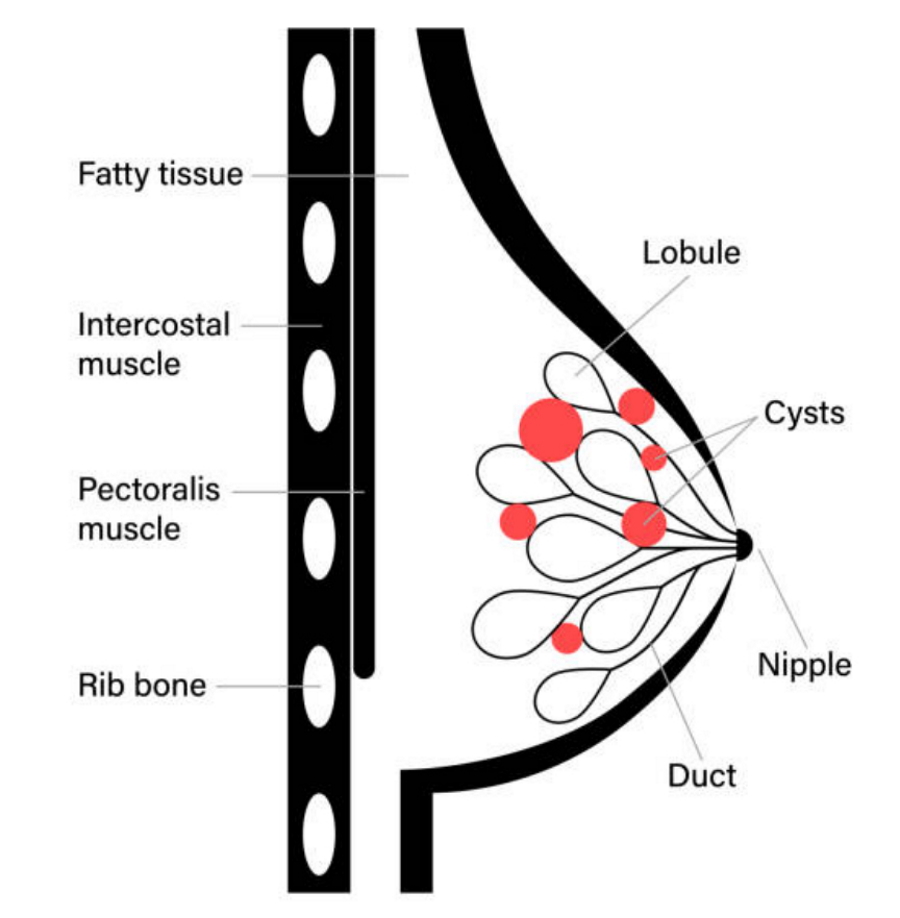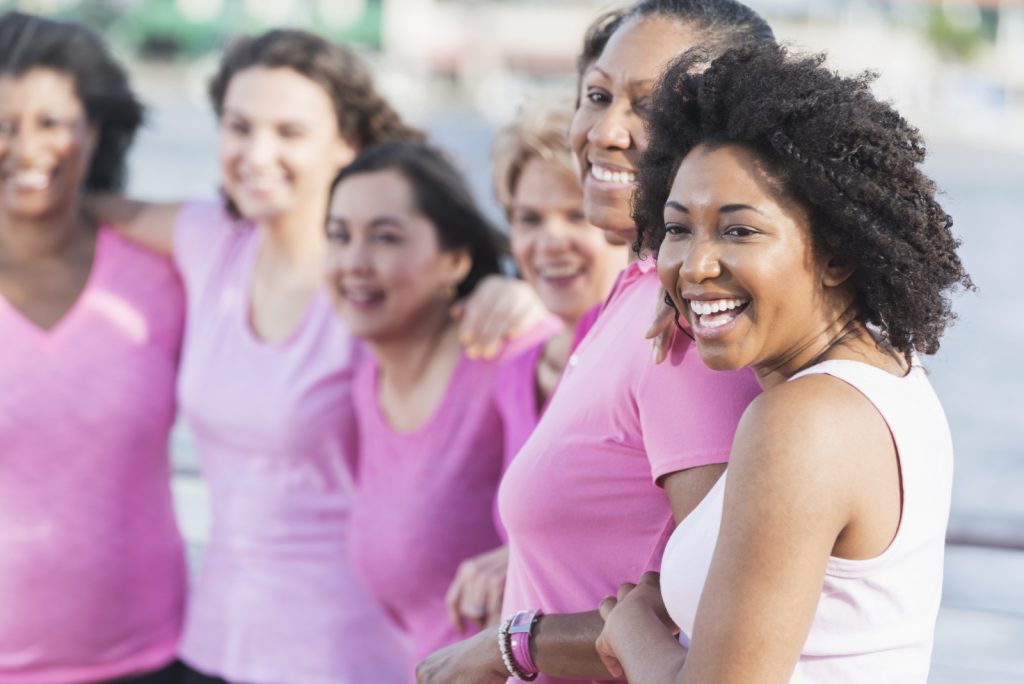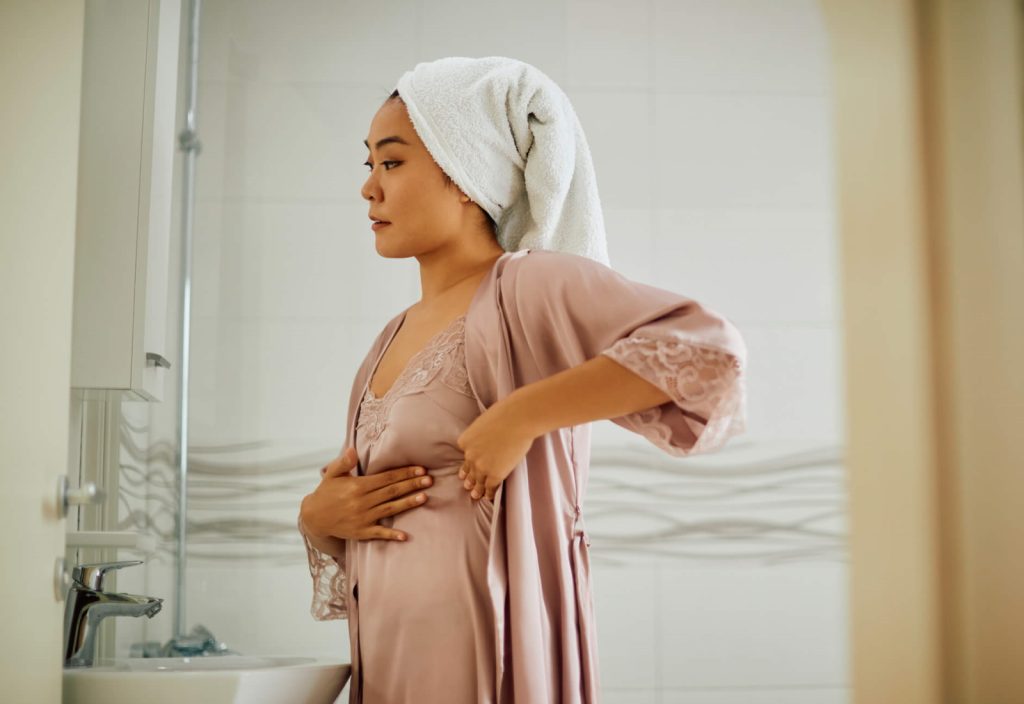Jolynn is one of the millions of women worldwide who suffer from uterine fibroids. And her symptoms certainly run the gamut—abnormally long periods and heavy bleeding, pelvic pain and pressure, and even constipation. But now, another problem exists: Jolynn’s breasts hurt, and she has some lumps. Her doctor diagnosed her with fibrocystic breast disease. This is a condition that sounds an awful lot like breast cancer but is instead another collection of non-cancerous fibrous tissue that can make the breasts feel lumpy.
Naturally, she and many other women with similar symptoms want to know if uterine fibroids and fibrocystic breast disease are related. In a word—no. While uterine fibroids and fibrocystic breasts are both impacted by estrogen, these are separate conditions, not related to each other. That means you can have fibrocystic breasts and not have fibroids, or you can have fibroids and not have fibrocystic breasts. Women like Jolynn may experience both at the same time. But again, fibrocystic breast disease and uterine fibroids are not linked.
Our team at Fibroid Institute Texas cares about the whole patient. We recognize that fibrocystic breast disease is a topic of concern, one that is asked about in fibroid forums and by patients. This is especially true during October’s Breast Cancer Awareness Month, when there is heightened focus on a woman’s body and health conditions women commonly experience. So here is information you may find helpful about fibrocystic breasts.
What Is Fibrocystic Breast Disease?

Fibrocystic breast disease—also known as fibrocystic breast changes, benign breast disease, mammary dysplasia, and breast fibroids—is actually a misnomer since it isn’t a disease at all. In fact, medical professionals have stopped using the word “disease” over the years when referring to this condition since breast changes that fluctuate during a woman’s menstrual cycle are common.
With fibrocystic breast changes, breast tissue thickens and leads to fluid-filled cysts in one or both breasts. While fibrocystic breast changes don’t always cause symptoms, many women experience a range of painful or uncomfortable symptoms, including:
- Breasts that feel lumpy, heavy, and swollen
- Changes in breast texture (rope-like feeling)
- Pain or discomfort in one or both breasts
- Pain that comes and goes with your period
- Breast lumps that change in size
- Green or dark brown non-bloody nipple discharge that leaks without pressure or squeezing
Fibrocystic breast disease is most common between the ages of 30 and 50, though it can manifest itself in post-menopausal women who continue to take hormone medicine. More than half of women experience this condition at some point in their life.
Are Breast Fibroids and Uterine Fibroids Linked?
No, they aren’t linked at all. Uterine fibroids are also non-cancerous growths, though they develop from the uterus’ muscle tissue. The majority of fibroids are diagnosed in women between the ages of 35 and 54. Many have one or several that differ in size and either stay that way or grow at different rates. Depending on size and location, fibroids may cause painful and debilitating symptoms that make it hard for you to carry on with your normal day-to-day activities. This can include many symptoms Jolynn experienced, plus painful sexual intercourse, back pain, bloating, and frequent urination.
While there aren’t studies that show uterine fibroids as the primary culprit of fibrocystic breast disease, it is true that both are directly impacted by hormones—especially estrogen. In fact, the higher the amount of estrogen (known as estrogen dominance) in a woman’s body, the higher the likelihood that she will develop uterine fibroids of varying sizes and locations.
Estrogen dominance can cause any of the following conditions:
- Uterine fibroids
- Fibrocystic breast disease
- PCOS
- Thyroid issues
- Immune disorders
- Ovarian cysts
- Breast cancer
With October being Breast Cancer Awareness Month, it is important to note once again that fibrocystic breast disease is not breast cancer. With that said, breast cancer already impacts 1 in 8 U.S. women (about 13%). It is estimated that 287,850 new cases of invasive breast cancer are expected to be diagnosed in women in 2022. For women in the U.S., breast cancer death rates are higher than those for any other cancer except lung cancer.

Furthermore, evidence does show that untreated uterine fibroids may be associated with breast cancer—again due to estrogen. One study, in particular, identified 24,315 patients with new diagnosed breast cancer as cases and matched them with 24,281 patients without breast cancer on age, sex, urbanization, income, and initial diagnosis date. The results showed that 2,892 patients with newly diagnosed breast cancer and 2,541 patients without breast cancer had a history of uterine fibroids.
The same study went on to say, however, that the link was considered to be a “minor increased risk” and added that the mortality rates from breast cancer were significantly lower in patients with fibroids. With that said, diagnosing breast cancer is very important—regardless of whether a woman has uterine fibroids, fibrocystic breast disease, both, or neither—and should be considered as early as possible to ensure proper treatment.
I May Have Fibroids and Fibrocystic Breast. What Do I Do Now?
If you have uterine fibroids and have been diagnosed with fibrocystic breast disease, it is important that you and your doctor keep a close eye on your ongoing symptoms and discuss the right treatment options for your unique situation. Tests to evaluate your fibrocystic breast condition may include manual breast exams, mammograms, ultrasound, and breast biopsies. And treatment options for breast pain can include over-the-counter pain relievers, oral contraceptives to lower estrogen levels, and either fine-needle aspiration or a surgical excision to remove persistent cysts or lumps.
From there, patients can look into a variety of lifestyle changes, including:
- Wear a firm support bra — If possible, have your bra fitted by a professional to relieve pressure and pain associated with fibrocystic breast disease. A bra won’t resolve fibrous tissue, but one article suggests that 85% of people find that wearing a well-fitted bra can reduce pain within three months.
- Use a warm compress — Heat can help ease pain associated with breast fibroids. Besides a warm compress, you can use a towel soaked in warm water or a hot water bottle.
- Manage stress — Stress is the body’s biochemical response to life challenges. To handle stress, the brain tells our body to produce extra hormones. As a result, hormone levels rise, which stimulates fibroid growth and causes symptoms to flare up.
- Get more exercise — Lighter routines such as yoga, swimming, biking, walking, light weight training, and stretching can boost endorphins, relieve stress, improve your mood, and act as natural painkillers.
- Choose your eating habits carefully — Eat more fruits, especially citrus, and vegetables. Eating a lot of red meat (e.g., beef) and sugary foods are linked to a higher risk of uterine fibroids. This also leads to weight gain, and according to the U.S. Office on Women’s Health, the risk for heavy women is two to three times greater than average. A healthy BMI, or Body Mass Index, is between 18.5 and 25.

UFE for Uterine Fibroid Treatment
Uterine fibroid embolization (UFE) has quickly become the gold standard for minimally invasive, non-surgical alternatives to uterine fibroid treatment. During UFE, the specialized fibroid doctors at Fibroid Institute insert small particles through a tiny catheter at the wrist using image-guided interventional radiology. The particles are introduced through the uterine arteries into the fibroid vessels, blocking the blood flow to the fibroids. By cutting off blood flow to all fibroids, the fibroids shrink and die. The procedure lasts about one hour, and patients are asleep during the procedure.
UFE benefits to patients at Fibroid Institute include:
- Covered by most major medical insurance
- No hospital stay
- Treat multiple fibroids at once
- No incision or vaginal access, just a small puncture on your wrist
- Shorter recovery period (average of one week)
- Uterus is spared
- Over 90% effective in reducing symptoms
Fibroid Institute Texas Wants to Help You Today!
Do you have fibroid symptoms? Are you noticing signs of fibrocystic breast disease? It can be very overwhelming to hear that you have both at the same time, and it’s easy to think they are linked. But we assure you they are not related. With that said, women may also wonder if their breast fibroids are breast cancer. The good news is that just like uterine fibroids, breast fibroids are non-cancerous. But that doesn’t change the fact that they can be painful for some patients. The best way to ease your concerns, get your questions answered, and find treatment options that work best for you and your unique situation is to have an open conversation with your doctor.
When it comes to treating your uterine fibroids, consider uterine fibroid embolization (UFE) for non-surgical fibroid treatment. Rather than a hospital stay, UFE is a same-day outpatient procedure. In fact, at Fibroid Institute Texas, we offer UFE to patients in the comfort of our offices equipped with advanced medical technology.
The expert fibroid doctors and specialized team at Fibroid Institute, with Dallas and Houston fibroid clinics, have helped thousands of women discover the joys of living fibroid free. With each UFE procedure, patients are empowered to achieve their full potential without being limited by fibroid symptoms. For many women, UFE changed their lives. Meet some of these women here:
Most major medical insurance providers cover the cost of UFE. You will need a formal consultation to determine if you are a candidate before scheduling your procedure. Call for a telehealth consult or an in-office appointment at our Dallas fibroid centers at 214-838-6440 or Houston fibroid centers at 713-903-3733 or complete the form below.
"*" indicates required fields
Fibroid Institute Texas serves the Dallas and Houston areas including Fort Worth, Grand Prairie, HEB, Arlington, Hutchins, Irving, Duncanville, DeSoto, Cedar Hill, Lancaster, Cockrell Hill, Highland Park, University Park, Park Cities, Garland, Mesquite, Richardson, Dallas, Sherman, Houston, Sugar Land, Katy, Webster, Clear Lake, The Woodlands, Universal City, Spring, Kingwood, Stafford, Conroe, Texas City, Cypress, League City, Bellaire, Addison, Carrollton, Plano, Frisco, McKinney, Craig Ranch, Allen, and more.
Prior to starting any new treatment or if you have questions regarding a medical condition, always seek the advice of your doctor or other qualified health provider. This information is not a substitute for professional medical advice.

